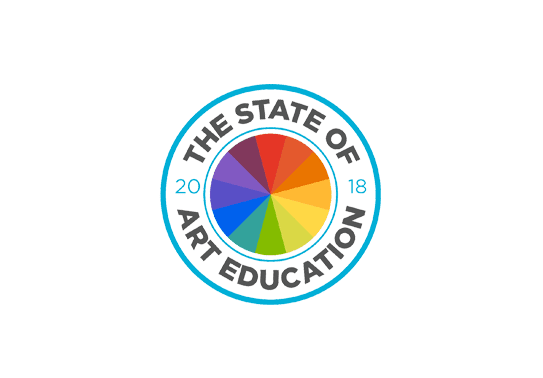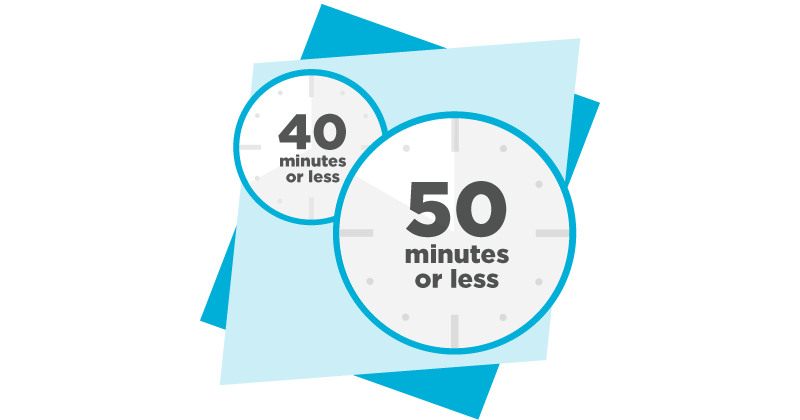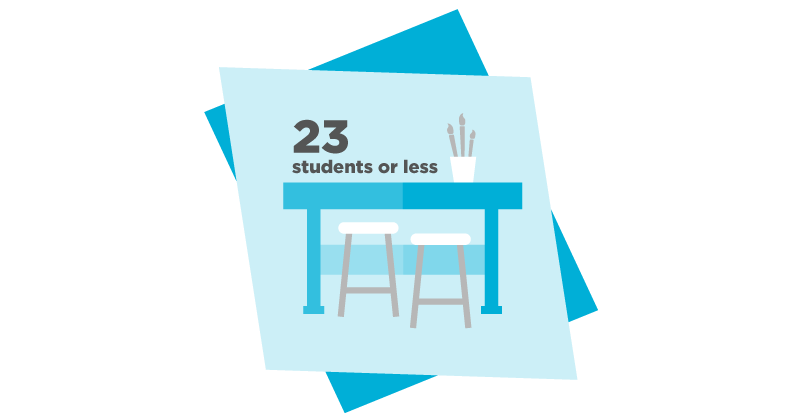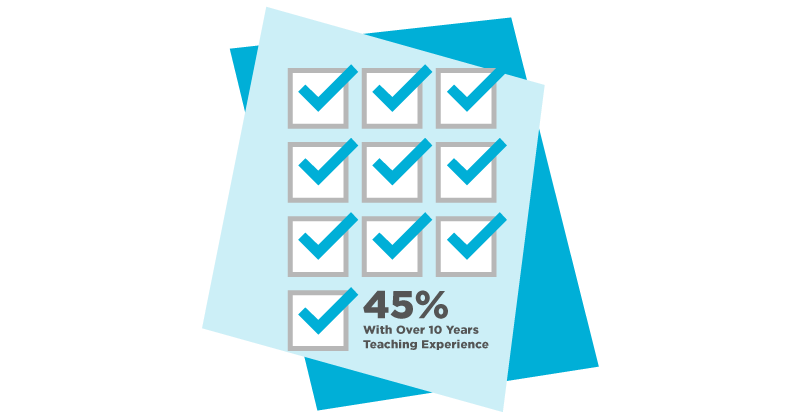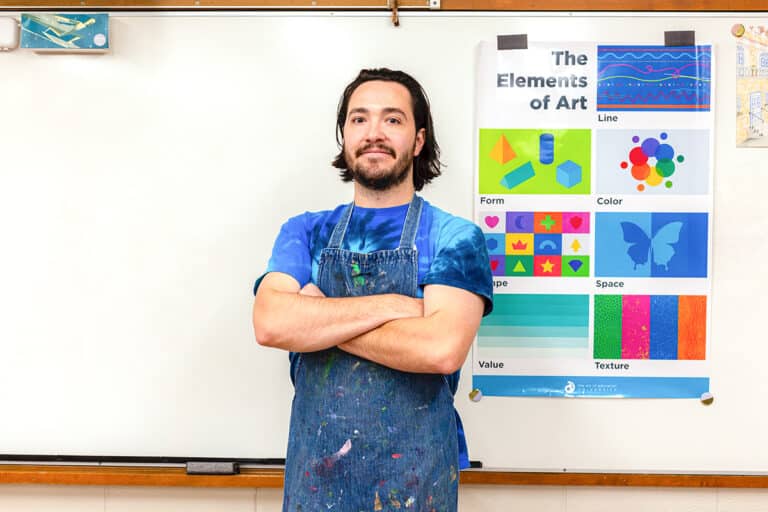In January of 2018, The Art of Education conducted the world’s largest survey of active K-12 art teachers in the United States. We asked about everything, ranging from annual supply budgets and length of art classes to how comfortable teachers felt with different media and current educational initiatives.
A total of over 2,500 teachers from all 50 states completed the survey, providing an eye-opening look at the current state of teaching K-12 Art in the 21st Century.
We are excited to share the results with you, starting with the most intriguing insights below. To download the survey results in their entirety, please click here.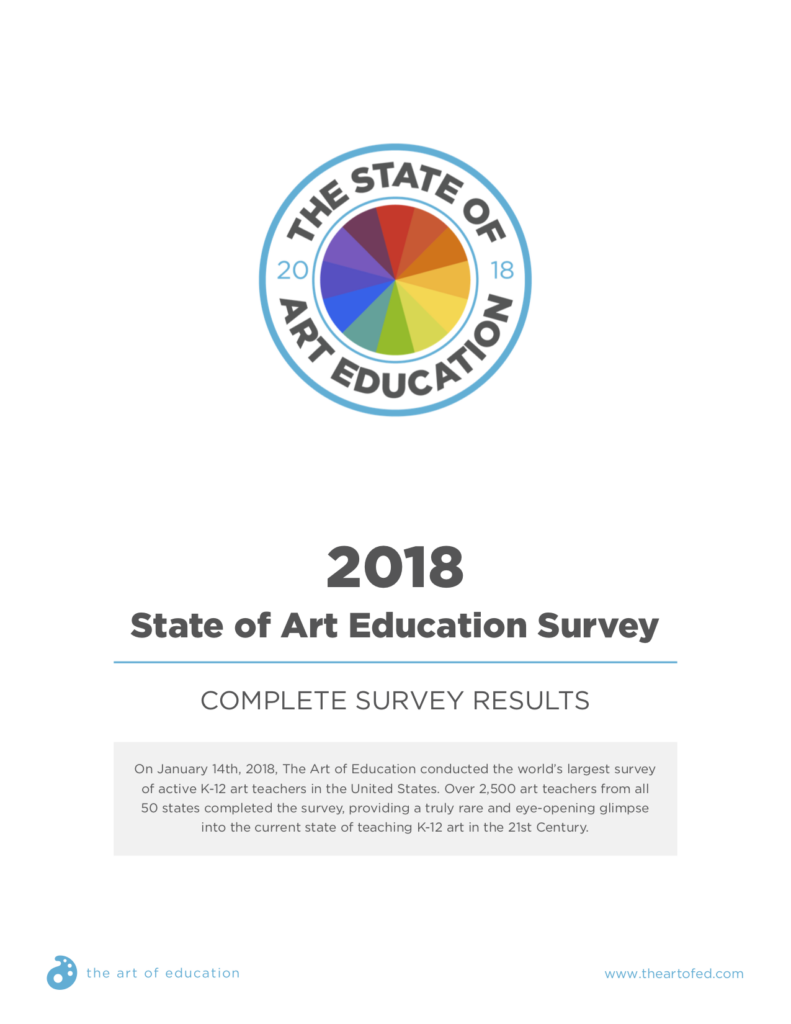
10 Quick Takeaways from the Full Report

1. Most art teachers work in the ‘burbs.
47% of art teachers work in a suburban setting; 31% are employed in rural schools and 22% in urban schools.

2. The struggle is real.
Behavior management is one of our most common classroom issues with 46% of art teachers striving to improve in this area. 43% of art teachers report a lack of respect for the art program as another hurdle they face.
3. Too much to do and too little time…
1 in 5 art teachers have class periods at or under 40 minutes in length. 3 in 5 have class periods at or under 50 minutes in length.
4. Elementary art teachers instruct, on average, about 500 students per year.
Remembering all those names can be a real challenge!
5. One is the loneliest number…
Two-thirds of art teachers are the only art teacher in their building. The average number of art teachers per district is 21.
6. 56% of elementary art teachers have average classes sizes of 23 students or less.
With the national trend continuing to slide toward larger class sizes, it’s refreshing to see some art teachers instructing smaller groups.
7. Art teachers set high standards.
75% of art teachers follow their state standards, while more than half follow the National Core Arts Standards.

8. There’s comfort in the familiar.
Over 90% of high school art teachers are comfortable teaching traditional drawing and painting, while only 28% are confident in leading digital art lessons.
9. Do what you love and love what you do!
45% of art teachers have over a decade of teaching experience.
10. Teaching art really is the best job in the world.
To end the survey, we asked teachers to talk about the best part of teaching art. Check out some of our favorite answers!
I get the greatest pleasure when students overcome their fears of making mistakes and really dive into making their art. -Elementary/Middle School Art Teacher from Illinois
Witnessing the pleasure my students evoke when they are happy with their work or the work of others. -Elementary Art Teacher from South Carolina
I love seeing students feel proud of their artwork. Seeing them improve their skills and being able to express their own unique thoughts and ideas is the best. -High School Art Teacher from Nebraska
I love the “light bulb moments” when they experience success, take pride in their work, and understand that they are creative! -High School Art Teacher from California
Remember this is just a bit of the fascinating info we discovered. Don’t forget to download the full report to get the full picture of what it’s like to teach art in 2018!
Download Full ReportWhat survey result did you find the most surprising (or unsurprising)?
Do you share similar experiences in your day-to-day teaching experiences?
Magazine articles and podcasts are opinions of professional education contributors and do not necessarily represent the position of the Art of Education University (AOEU) or its academic offerings. Contributors use terms in the way they are most often talked about in the scope of their educational experiences.
